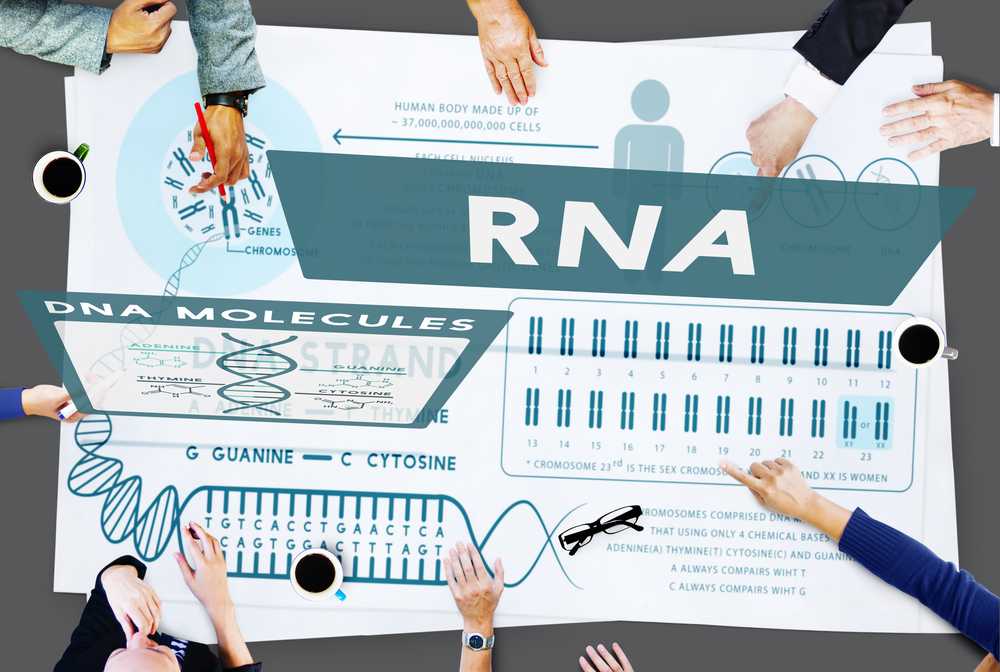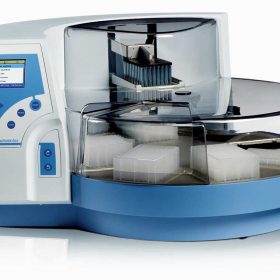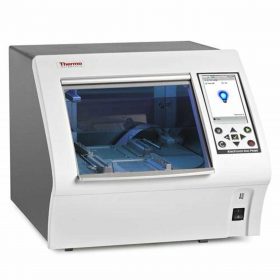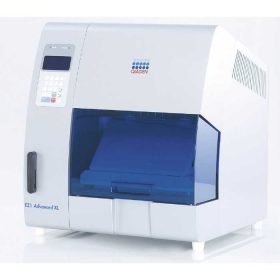Table of Contents
Is your lab or medical testing facility equipped with the best RNA extraction machine for fast testing and to ensure accurate results all around?
We hope that answered yes to the question above, and if you are not using the best RNA extraction machines to test for COVID-19, read this guide.
In as much as you may have heard of the many kinds of expensive equipment that you could be using to test COVID-19, you need the best of these machines for efficient tests.
COVID-19 or the Coronavirus disease 2019 remains one of the biggest challenges for populations across the world. As measures are put in place to reduce spread, increase the numbers of vaccinated individuals, and search for more effective vaccines and possibly treatments because of the high rate of mutation, the disease still is a big problem. Severe acute respiratory syndrome coronavirus 2 or SARS-CoV-2 causes the COVID-19 disease.
To date, testing and detecting the disease-causing virus are through CDC-commissioned RT-PCR (Reverse Transcription Polymerase Chain Reaction), a test that detects viral DNA in the sample. Unfortunately, RT-PCR is not 100% efficient because of the RNA extraction, which remains a big bottleneck for the process.
For the most part, simplification of the test procedures has seen methods that circumvent the extraction of RNA through the use of RT-PCR on either lysed or heat-inactivated samples. While heat inactivation had good and reliable results overall, RT-PCR processes are not only time-consuming and laborious but the extra steps involved increase the margin of error. This has led to an increased emphasis on the use of protocols involving RNA-purification kits.
With this in mind, it goes without saying that using RNA extraction machines will increase the efficiency of COVID-19 testing. Although RNA extraction is one of the newer routines, it holds immense promise of great success in COVID-19/ SARS-CoV-2 testing.
What Is RNA Extraction?
DNA and RNA are the essential elements for gene expression, but they also look structurally different, as their differences in names. DNA is double-stranded while RNA is single-stranded. Because of the differences in the structures of these nucleic acids, it’s difficult to isolate RNA from DNA, among other cellular components. Successful RNA extraction depends not just on removing or destroying the RNases, which are the enzymes that degrade RNA molecules, but also high-tech systems for cautious handling of the extracted RNA samples.
Obtaining the best quality RNA, the most critical process in most molecular processes, including RT-PCR, RNA isolation, and generation of the most biologically relevant and sensitive results, would mean using the best RNA extraction equipment or devices.
In other words, RNA extraction refers to purifying the single-stranded RNA from the collected biological/ cellular samples.
How Does RNA Extraction Work?
Despite the close structural similarities between the deoxyribonucleic acids (DNA) and ribonucleic acids (RNA), extraction procedures that apply to DNA don’t work for RNA extraction. There are three main steps involved:
- Cell Lysis & RNase Inhibition
- DNA Removal
- RNA isolation
Cell Lysis and the inhibition of the activity of RNase (the enzymes that break down RNA molecules).
The RNA extraction kits often require the homogenization of the sample tissue in a buffer made of detergents and a denaturing agent for RNase that will lyse (break down) the cells, inhibiting the activity of RNase. This is considered the most important step in RNA extraction because it results in the deactivation of the endogenous RNase.
With this in mind, the extraction process involves using very strong denaturants like guanidium salt that will disrupt the sample cells while solubilizing the cells’ components and subsequently denaturing the endogenous RNase. The main denaturing agents used include guanidinium cyanate and also sarcosine and β-mercaptoethanol.
DNA removal.
Here, the lysed cell components undergo treatment of the cell samples using DNase I enzyme, although non-enzymatic options exist. Some of these non-enzymatic methods involve using liquid-liquid components or extractions like gDNA eliminator solutions or the solid-phase extractions that involve the use of devices known as the gDNA eliminator spinning columns.
Isolation of the total extracted RNA.
Oftentimes, the total RNA collected will have between 1% and 5% mRNA. After DNA’s removal, different methods can be employed to ensure the successful isolation of RNA. Like DNA removal, there are varied RNA isolation methods. The most popular options are commercial kits like the liquid-liquid extraction kits made of compounds like TRIzol or phenol-chloroform.
Solid-phase extraction methods are available as well, and the most common solid-phase RNA-isolation method is either the silica-based membrane or the use of paramagnetic bead technologies. The separation or isolation of RNA depends on centrifuges and solutions of chloroform and phenol forming upper aqueous phased with the nucleic acids. The lower phase from the centrifuge contains the cellular proteins.
So, where does the DNA go to during RNA extraction? These two nucleic acids are successfully separated by the presence of a PH that is unfriendly to DNA during the aqueous phase. Sodium acetate is often added to the solution, creating an acidic environment that makes DNA organic while RNA remains in an aqueous phase. Keep in mind that both RNA and DNA are in aqueous form/ phase/in the neutral condition. Isopropanol is then added for precipitation of the RNA molecules extracted.
Generally, the RNA isolation kits are manual, but there are liquid-handling robots in large-scale setups that ensure high-throughput assays and high turnover rates.
Note, however, that despite the RNA isolation method used, you need to employ the best tools to accurately determine the quantity of the recovered RNA, especially before the downstream analysis of gene expression, where this is the reason for RNA extraction. Generally, the quantity of RNA collected is made possible through methods like Fluorometry and spectrophotometry – these methods are RNA-dye-specific and UV-specific, respectively.
What Is The Difference Between DNA And RNA Extraction?

There are many differences between the extraction of RNA and DNA, but the main difference lies in the PH levels needed for the extraction of RNA or DNA.
DNA extraction occurs in slightly alkaline conditions at PH 8, while RNA extraction occurs in acidic conditions at PH 4.7. The reason for the differences in the PH is that DNA denatures and subsequently moves an organic phase in acidic conditions. On the other hand, RNA undergoes alkaline hydrolysis in alkaline conditions because of the 2’OH present in RNA’s ribose sugar.
With this information in mind, the extraction of DNA and RNA involves two separate procedures. There also are different procedures involves in RNA & DNA isolation and purification.
The other difference between the extraction of the molecules of RNA and RNA is that while the extracted DNA can be stored in batches for use later, extraction of RNA should only take place when the RNA is needed, which is why RNA extraction takes place before the necessary downstream process. RNA’s storage is only possible at -80 degrees Celsius, while DNA’s is at -20 degrees Celsius for long-term storage.
Advantages And Disadvantages Of DNA/ RNA Extraction Methods?
Advantages
- The automated and advanced DNA and RNA extraction methods ensure great savings in terms of time and other resources needed.
- With the current global pandemic, the new/ advanced extraction methods for DNA and DNA ensure reliable and fast results.
- RNA extraction is essential for testing blood and other fluids like the cerebrospinal fluid. Testing samples with DNA and RNA means inhibited tests from the high heme content and other unidentified molecules/ constitutes.
Disadvantages
- The DNA and RNA extraction methods and machines are expensive
- Some methods are more effective than others
Best RNA Extraction Machine In The Market

Now that we know all about the RNA extraction process, let’s take a look at some of the best extraction machines. These RNA extraction machines are great tools needed in COVID-19 testing, which depends on tests done on the RNA strands of the SARS-CoV-2 strands.
However, the best part about investing in the best RNA extraction machines is that these machines ensure automation of the RNA extraction processes, either from tissues or cell samples.
With the integrity and the purity of the extracted RNA samples the most crucial parameters in disease (COVID-19) testing, the use of the RNA extraction machines not ensures the quality, purity, and integrity of the extracts but also lowers the risk and speed of RNA degradation. The machines also simplify the workflow while also improving the quantity of extracted RNA.
But which is the best RNA extraction machine or kit? What do you look for in the kits designed for RNA extraction?
Well, for starters, the RNA isolation kit chosen should have the capacity to recover all the required RNA from being tested, and the isolated RNA must meet certain set standards for quality.
In terms of quality, the total RNA samples collected must be:
Free of contaminants and proteins that could inhibit tests and other downstream processes for molecular analysis
The RNA must remain intact and free of any nucleases because these could cause the RNA to breakdown/ degrade
The RNA should be free from any gDNA contamination.
Bear in mind that generally, the full degree of sample contamination by either proteins or other kinds of contaminants is determined by the absorbance ratios at 260 and 280nm. And for the collected RNA to be rated as pure, the total values of the collected RNA should be more than 1.8. This is also the RNA that is acceptable for the downstream processes, including molecular analysis.
Finding The Best RNA Extraction Machine. Comparison of Top 10 RNA extraction in COVID-19 testing by performing RT-PCR in patient samples
1. Kingfisher Flex ($32,500.00)

The Kingfisher Flex is a 96-deep-well-head RNA extraction or purification system. The most advanced features offer the most versatile and highest level of automated magnetic particle processing for both RNA and DNA. It could also be used for cell and protein purification from pretty much any source.
This RNA extraction machine uses revolutionary technology – magnetic particle separation technology, which ensures the best quality RNA, great collected volumes, and a high level of reproducibility.
It’s also on top of our list because of its high efficiency and the fact that it has a high throughput and the capacity to handle up to 96 samples in 20 minutes or less.
2. Kingfisher Duo Prime ($15,999.00)

This Duo purification system is the other reliable RNA extraction machine that boasts a high throughput and high yields in terms of the quality and quantity of RNA or DNA. It runs on the automated magnetic bead technology used for RNA isolation, and it boasts a high degree of efficiency and reproducibility for samples up to 5mls.
It has a compact design meaning it’s an ideal option for use in laboratories where it’s needed for RNA purification and isolation, as well as cell isolation and in proteomics. Then there is the built-in UV lamp that delivers the most effective and easy decontamination of samples and results, not to mention the Pure RNA and DNA isolation kits that are easy to use. These kits are customizable with Kingfisher’s trademarked Thermo Scientific BindIt software solution.
You may also like this machine because its operating software runs in 8 languages, and protocols can be developed or modified.
3. Chemagic 360 ($25,599.00)

The Chemagic 360 is an RNA isolation machine developed by PerkinElmer. It’s one of the most flexible solutions used for the automated purification of nucleic acids. It comes ready-to-use, it’s fast, and leaves you with high-quality RNA. It’s based on the patented magnetic bead technology, and it is a great tool for scientific research in bacterial and virus testing, HLA Typing, Human Genetics, and Biobanking. It handles larger sample volumes of between 10 μl and 10 MLS.
4. MagNA Pure 96 ($25,999.00)

This is one of the best robotic extraction machines for RNA. It boasts a very high throughout, and it’s designed as a standalone workstation that runs on a fully automated system. This equipment could work well for up to 96 samples that require RNA isolation and purification and the in-vitro diagnosis of the test samples.
As a piece of equipment that can purify RNA, DNA, as well as viral nucleic acids for viruses like SARS-CoV-2, this would be a worthy investment for you if you are interested. It uses magnetic glass particle technology and features several pre-programmed protocols (software), which are all individually tested to meet the different requirements of the test samples. The quality of the results is high and reliable, with the resultant purified RNA ready for use in a wide range of essential scientific downstream applications.
And as suggested by the name MagNA Pure 96, this machine boasts the capacity to process a maximum of 96 samples. These samples can be in pre-filled trays with ready-for-use reagents, and they could be barcoded as well. Unlike RNA machines like the Kingfisher Flex that processes the 96 samples in not more than 20 minutes, this one takes a bit longer, and the same number of test samples go through processing in an hour. On the upside, a bigger number of sample types could be processed all at once.
On top of these, you also get to enjoy the most seamless management system with the most intuitive functions and features. It also minimizes error risk; it’s quite stable from cross-contamination or interference by different substances.
5. QIAcube Connect ($21,500.00)

Regarding the best of RNA extraction, isolation, and purification, QIAcube boasts the best level of performance thanks to its fully automated design that features the spin-column system for RNA extraction. With the solid-phase spin-columns, you wouldn’t have to change the chemistry of the components, and you get results immediately.
It’s one of the most robust options in the RNA extraction machines realm in that it allows for easy automation of at least 80 QIAGEN (test) kits. Also, it runs more than 140 standard protocols for RNA, DNA, and protein sample processing. And thanks to the incorporated optional customization protocol, it has the capacity for more than 3000 protocols.
The QIAcube Connect features a heated shaker, a centrifuge, a robotic gripper, and a pipetting system that can handle at least 80 kits in its most basic operational systems. There is also the UV-Light decontamination system that is built-in to prevent cross-contamination between the samples. It’s also easy to use.
6. TissueLyser II ($3,100.00)

If you are looking for a nucleic acids extraction machine that boasts a secure and convenient disruption process for samples and with high or medium throughput, the TissueLyser II could be the ideal solution for you. It allows for easy and fast sample disruption for fast and accurate molecular analysis.
The incorporated adapter sets ensure the most optimized level of sample disruption. Then you have the fact that it also allows for reproducible results even for the cells and tissues that are most difficult to lyse.
Note that the cell/ tissue lysis happens thanks to the high-speed shaking of the plastic tubes with samples. The glass bead, tungsten carbide, or stainless steel are responsible for the shaking. And with the right adapter sets in use, between 48 and 192 samples undergo processing.
7. LabChip GX ($5,500.00)

The other nucleic acids extraction tool is the ideal option for RNA and DNA sizing and quantification. It yields results very fast thanks to its processing based on the automated capillary electrophoresis method of RNA/DNA separation. The labchip GX touch function makes it easy to use
You may also like it because it uses an additional type of technology called the nucleic acid analyzer microfluid technology that ensures the generation of highly reproducible and high-resolution data. As a result, it is the ideal option for DNA and RNA fragment analysis that includes the free-cell or cell-free DNA, PCR-Free libraries, and the DNA isolated from the FFPE samples.
The best part is that it works well in screening the nucleic acid source materials for SARS-CoV-2 virus and vaccine development, not to mention its use in the qualification and quantification of CRISPR fragment analysis.
8. Echo 525 ($25,999.00)

The Echo 525 Acoustic Liquid Handler is an important part of the RNA extraction machines. It allows for acoustic transfers of the aqueous-based transfers.
The Echo 525 has been designed for use in genomic sample, biochemical, and reagent transfers. Some of the advantages associated with its use include improving the quality of the data, even while it saves on the cost of the reagents. It’s also the perfect reservoir for handling reagent transfers in higher volumes.
9. epMotion 5075 LH ($6,999.00)

Automated pipetting is important in RNA extraction, and purification and this epMotion 5075 offers the best-automated system for liquid handling. It’s ideally used for shaking, cooling, and heating samples, as well as reagents. Thanks to the incorporated TMX module, you can load or unload this liquid handling system using a gripper before pipetting the sample to the mixer before and after the mixing steps. The module is fully automated.
10. EZ1 Advanced XL ($2,999.00)

This RNA extraction tool works well in the automated purification processes for nucleic acids. You use it to handle a maximum of 14 forensic, human, and molecular (diagnostic) samples.
This piece of equipment allows for the purification of high-quality RNA and DNA genomic sequences, even from the widest range of samples. The throughout is not as high as that seen in bigger machines like the Kingfisher flex – this machine only handles 14 samples in each run/ session. It has a UV lamp built-in to minimize the risk of contamination.
CONCLUSION
RNA extraction is essential for disease diagnosis, especially for SARS-CoV-2 coronavirus that causes the disease COVID-19. While RT-PCR is an effective method, it is costly, and the results are not obtained as fast. With RNA extraction machines, the results are obtained fast, and the volume and quality of RNA collected are great and can be used for other molecular tests and genomic analysis.
To enjoy these benefits, the 10 recommended RNA extraction machines above would be a good place for you to start your search as you look to improve the performance and efficiency of your lab.
